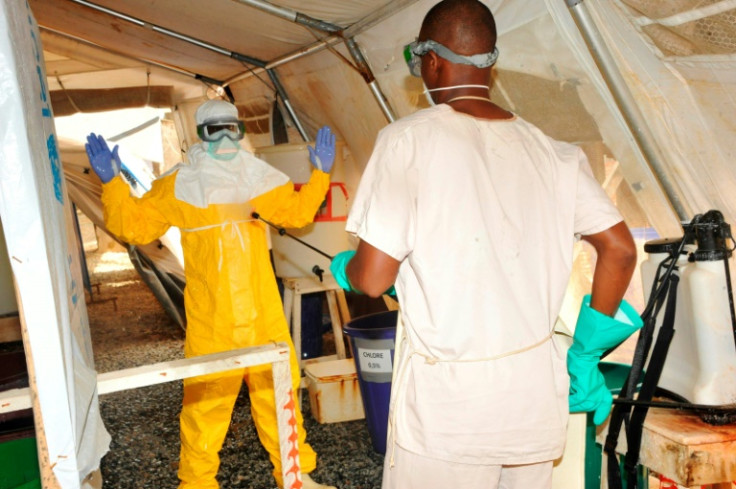Marburg virus outbreak in Tanzania kills five people
The fatality ratio of the disease is up to 88% but can be much lower with proper medical care.

Five people have died while three others are being treated for the Marburg disease in Tanzania, confirmed the state's health ministry.
The cases of the deadly Ebola-like virus were found in the western region of Kagera. As many as 161 contacts are being monitored for a possible infection. According to Health Minister Ummy Mwalimu, the government has managed to restrict its spread.
The outbreak in Tanzania comes after nine people died of the infection in Equatorial Guinea last month. The outbreak in Tanzania has also put neighbouring Uganda and Kenya on high alert.
The Africa Centers for Disease Control and Prevention (ACDC) declared Marburg disease an outbreak on Tuesday in Bukoba district, Kagera region, north western Tanzania.
The World Health Organisation is also assisting Tanzania to check the spread of the deadly virus. "The efforts by Tanzania's health authorities to establish the cause of the disease is a clear indication of the determination to effectively respond to the outbreak," said Matshido Moeti, WHO regional director for Africa. "We are working with the government to rapidly scale up control measures to halt the spread of the virus."
The Republic of Tanzania declares Marburg Virus Disease #MVD Outbreak.
— Africa CDC (@AfricaCDC) March 22, 2023
On 21 March 2023, the Ministry of Health of the Republic of Tanzania declared an #outbreak of Marburg virus disease in Bukoba district, Kagera region, north western Tanzania.
More 👇 https://t.co/yWOXvnBFiY
This is the first time a confirmed case of Marburg virus disease (MVD) is reported in Tanzania. In the past, individual cases and outbreaks have been reported in countries like Angola, Congo, Kenya, South Africa, Uganda and Ghana.
What is the Marburg virus?
Marburg virus is the causative agent of Marburg virus disease (MVD), formerly known as Marburg haemorrhagic fever, which is a severe illness that is often fatal in humans.
The virus was first recognised in 1967 when simultaneous outbreaks of haemorrhagic fever occurred in Marburg and Frankfurt in Germany, and in Belgrade, Yugoslavia (now Serbia). The fatality ratio of the disease is up to 88% but can be much lower with proper medical care.
Both Marburg and Ebola viruses belong to the Filoviridae family (filovirus). They are both clinically similar, rare and have the capacity to cause outbreaks with high fatality rates. Marburg virus is initially transmitted to people from Rousettus aegyptiacus, fruit bats that are natural hosts of the virus and spreads through human-to-human transmission.
In humans, Marburg spreads through direct contact with the bodily fluids of infected people, such as mucous secretion, blood, or other bodily fluids. Infection can also take place from coming into contact with surfaces and materials like clothes, bedding, etc. that are contaminated with these fluids.
The virus is highly contagious and can also spread through contaminated medical equipment, like injections. According to the WHO, people remain infectious as long as their blood contains the virus. The agency added that burial ceremonies that involve direct contact with the body of the deceased can also contribute to its transmission.
According to the WHO, the illness caused by the Marburg virus begins abruptly, and infected patients show symptoms of high fever, severe headache, and severe malaise.
⚠️ BREAKING:
— Infectious Disease Tracker (@HmpxvT) March 22, 2023
The Marburg outbreak in Equatorial Guinea 🇬🇶 has spread to two other provinces about 150 km apart from each other, suggesting widespread community transmission, according to WHO. pic.twitter.com/LNvNsYc9bj
Many patients also developed severe haemorrhagic symptoms within five to seven days of falling sick. Some other symptoms include muscle pain, body pain, severe watery diarrhoea, abdominal pain, cramping, nausea, vomiting, extreme lethargy, bleeding, and more.
It is usually difficult to diagnose the virus initially, as the symptoms are similar to those of typhoid and malaria. The virus usually takes between two and 21 days to incubate, leading to abrupt symptoms, some of which can make Marburg difficult to diagnose initially due to the common symptoms.
In fatal cases, death occurs most often between eight and nine days after symptom onset, usually preceded by severe blood loss and shock.
Currently, there are no vaccines or antiviral treatments approved for Marburg virus disease. However, according to the WHO, early diagnosis, and a supportive care system with treatments like rehydration with oral or intravenous fluids, and treatment of specific symptoms have proven to improve the chances of survival in patients.
While there is still no approved treatment for the virus, a range of potential treatments, including immune therapies, drug therapies, and vaccines, are being developed and evaluated.
© Copyright IBTimes 2025. All rights reserved.






















